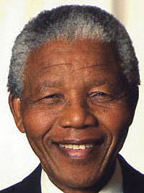South Africa

- © UNESCO
- Nelson Mandela, UNESCO Goodwill Ambassadors
South Africa first joined UNESCO on 4 November 1946 and withdrew in 1956. It rejoined on 12 December 1994. The country is covered by the UNESCO office in Windhoek, Namibia.
Committed to safeguarding African cultural heritage, South Africa initiated the African World Heritage Fund with a US$2.7 million contribution. Launched in 2006, it helps African states preserve their natural and cultural sites.
Eight World Heritage sites are found in South Africa. Best-known is Robben Island, where Nelson Mandela and other political prisoners were held. Sterkfontein, Swartkrans, Kromdraai and surroundings yielded the famous Taung Skull Fossil – from the hominid Austalopithecus africanus – in 1924. The area is often called the “cradle of humanity”.
South Africa emphasizes community-building. Cooperation with UNESCO on the Integrated Sustainable Community Initiative at the University of KwaZulu-Natal has led to successful work in HIV-AIDS prevention, and literacy and human rights development.
Nelson Mandela, former President of South Africa, was named a UNESCO Goodwill Ambassador in 2005.

